| Umělec 2003/1 >> No Thanks: Prague Biennale | Просмотр всех номеров | ||||||||||||
|
|||||||||||||
No Thanks: Prague BiennaleUmělec 2003/101.01.2003 Elisabeth Maas | commentary | en cs |
|||||||||||||
|
"The Prague Biennale was a major failure. This alone is something to be sad about, as it is important for a first Biennale to be at least honorable, as it was in Berlin a few years ago. Why? It is important for the establishment of the show. The general ideological idea of a regular show should be apparent right from the start, so that the audience, artists, curators and critics can imagine being part of it in the future, and therefore promote it. This promotion is more credible than a show that “announces itself as the major art event of the year, marking the difference from all the other big international exhibitions.” I think cities like Venice, Istanbul, Valencia and others can really be very satisfied about marking difference in quality.
I am not talking about the quality of the individual works, but the overall attitude of the organizers, who label themselves the most influential curators, and their magazine the world’s leading art magazine. What is so bad about this attitude of announcing to the world that we are the champions and we are the leading, most influential curators and critics? The bad about it is that it’s not true. The bad about it in Prague is that it’s not as easy to prove as it is in Venice, Berlin or New York. In these cities the knowledge and experience of the audience has grown over the many years and through a lot of shows and publications. A normal interested visitor of the Venice Biennale can differentiate between the various curators, as their shows have appeared in different places, in different institutions, and the visitor has read their articles in one of the art magazines, and probably Flash Art International. This means that if the visitor is confronted by the claim of being a leading art magazine or the most influential curators, the visitor knows others who are better. Confronting an audience that is less informed and educated in the international scenery is not only arrogant, but also undemocratic. The Biennale of Prague was intended to bring international art impulses to the city, in order to influence and educate young artists, art historians, curators and critics, inform the general public about contemporary international art and track some of the art tourists traveling from Venice to Basel to Prague. The international guests are not an issue; they do very well comparing the shows in Venice or Basel to this one in Prague. But what about those who cannot travel easily, or see it as an additional cookie for another nice holiday venue? These people see a show which looks in its representation like a quick and dirty artfair solution. The impression is that this is the way contemporary exhibitions are presented, curated and organized. We know this not to be true, but is it known by the everyday visitor? And then if people criticize this show for very good reasons, are they against contemporary art in general? No, they are just criticizing this way of making a presentation, this way of displaying arrogance and ignorance, combined with words like: “All the artworks at the Prague Biennale will be presented in a pluralistic mix. In this way Mission Possible, the Czech section, is open to other European nationalities and aims to rethink the identity of the Central Europe.” We should all hope that this show does not represent or rethink the identity of Central Europe and that this does not represent the Czech notion of contemporary art. This wording and this representation mark out one problem, all the pathos and promotional wording lead to the opposite effect in the people’s minds: if that is contemporary art, if this is founding identity in Central Europe, who are we and what is our part and why do we need people who call themselves “the most influential”? Do we really need to import the Italian style of politics to Prague? If leftwing curators or critics are being hindered by the Berlusconi government, if Francesco Bonami does not hide his sympathy for Berlusconi, do we really need their conflicts dragged into Prague? As Mick Jagger put it in “Sympathy for the Devil”: Please allow me to introduce myself / I’m a man of wealth and taste / I’ve been around for a long, long year / stole many a man’s soul and faith. On top of the pathetic promotion, there was the treatment of the curators and the artists by the organization. What do the invited international artists, many of whom footed all of the bills themselves, think about the quality of services provided for the artists? Best put, it goes like this: they think this is still the unorganized chaos of a developing country. The most influential curators are not responsible for these conditions; after one week they travel back to their home country. But the image within the international artist scene will remain skeptical. These profound problems will stay with the image of the Prague Biennale. The artists, gallerists, curators and critics from Prague will face this problem in their conversations with people around the globe. Generally speaking, what could have been done differently? First, it could have been clear that an art magazine is an economically driven part of a publishing house, which constitutes a conflict of interest. Second, the method of inviting many curators and many artists is a way to put the economic and artistic responsibility into the hands of many, thereby keeping hands clean. If an artist is unsatisfied with the situation the curator will be held at fault, or the general facilities of the country, but not the disorganization of the show. The notion of inviting more than 200 artists sounds good, but on the other hand that means the budget does not allow for so many artists and their work, which leads to general budget problems for everyone. Perhaps you invite just 70 artists and three curators and the budget is spread out evenly. The biggest problem is that the magic of Prague with its rich and colorful culture and history is not reflected in the show at all. If people come to Prague to see this show they come to Prague with many images, words and ideas in their heads, and they find nothing of this correspondence in the show. This is an opportunity lost to link the city and the artists to the international scene and to catch the longterm interest of international professionals. The show should have been developed from the city and with the cultural identity of the city at heart. It would have been easy to find interesting situations for international artists to work with the urban-cultural landscape. The knowledge of cultural history could have been the source for an international curator to invite artists to bridge Prague and global art. "
01.01.2003
Рекомендуемые статьи
|
|||||||||||||
|
04.02.2020 10:17
Letošní 50. ročník Art Basel přilákal celkem 93 000 návštěvníků a sběratelů z 80 zemí světa. 290 prémiových galerií představilo umělecká díla od počátku 20. století až po současnost. Hlavní sektor přehlídky, tradičně v prvním patře výstavního prostoru, představil 232 předních galerií z celého světa nabízející umění nejvyšší kvality. Veletrh ukázal vzestupný trend prodeje prostřednictvím galerií jak soukromým sbírkám, tak i institucím. Kromě hlavního veletrhu stály za návštěvu i ty přidružené: Volta, Liste a Photo Basel, k tomu doprovodné programy a výstavy v místních institucích, které kvalitou daleko přesahují hranice města tj. Kunsthalle Basel, Kunstmuseum, Tinguely muzeum nebo Fondation Beyeler.
|







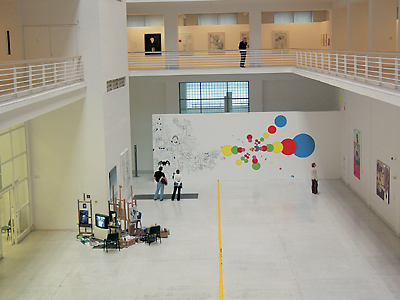














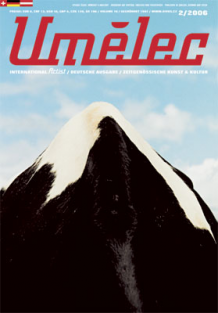




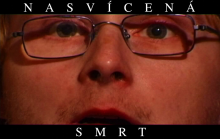
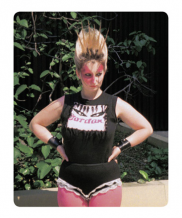
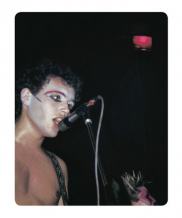



 New book by I.M.Jirous in English at our online bookshop.
New book by I.M.Jirous in English at our online bookshop.
Комментарии
Статья не была прокомментированаДобавить новый комментарий